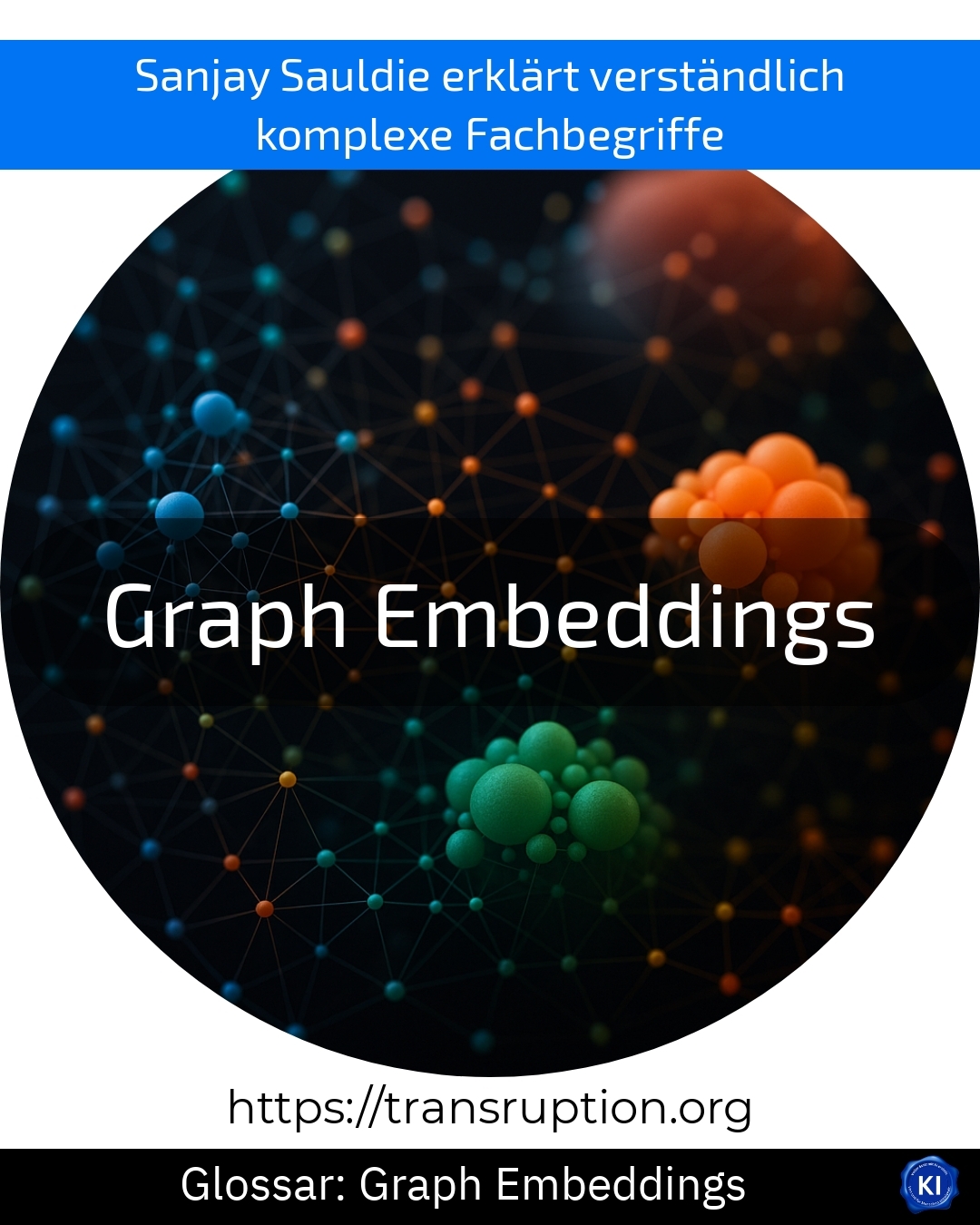Graph embeddings are a term used in the fields of artificial intelligence, big data, smart data and digital transformation. They describe a method of displaying large amounts of complex data from so-called networks or "graphs" - i.e. systems of different points (e.g. people, devices or websites) that are connected to each other - in such a way that computers can process and analyse them more easily.
Imagine, for example, a social network like LinkedIn: Each user is a dot, and the connections to other users are lines in between. Graph embeddings translate this network into series of numbers that computers can understand. This allows artificial intelligence to quickly recognise similarities, suggest new connections or even uncover suspicious patterns.
A practical example: a company wants to find out which employees could work particularly well together. With Graph Embeddings, the software can analyse the relationship data and make concrete suggestions as to who would make a good team - even in very large companies.
Graph embeddings therefore help to obtain easily understandable answers for various applications in the digital world from a large amount of complex relationship data.















